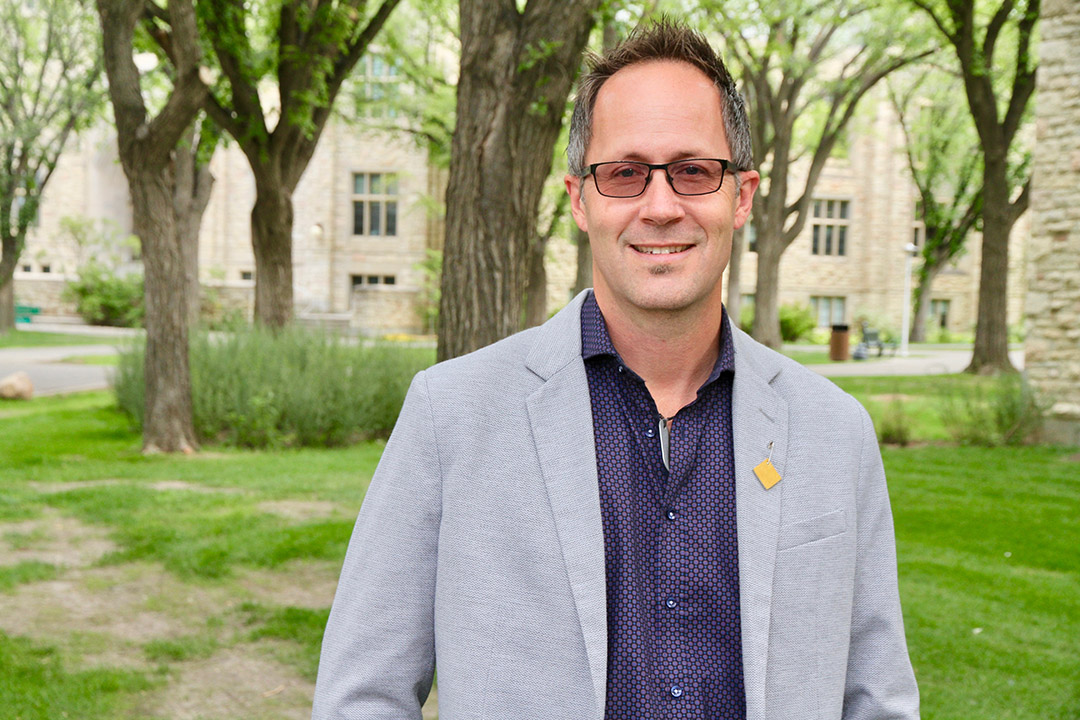
Fall gathering an opportunity to hear Indigenous stories on campus
Stryker Calvez is becoming well known on campus for his work towards building a better understanding of and support for Indigenous Peoples across campus.
By Ashley DopkoAs manager of Indigenous education initiatives, his passion for his work stems from his own experiences, and those of his family. Although Calvez is becoming a well-known figure in the Métis community, it wasn’t until he was 11-years old that he started to learn about his own heritage as a Michif (Métis from the Red River territory) researcher and educator.
Like many kids in Western Canada, Calvez was in Grade 5 when he learned about the Red River uprising and the Riel Rebellion. It wasn’t until his dad commented, “Louis Riel, I think we’re related to him, a distant cousin or something” that Calvez was introduced to his own Métis family heritage.
Through conversations with his dad and extended family, Stryker learned that in the 1920s, a time when the cultural ban was in full effect, his memère (father’s mother) was pressured to not talk about her family’s Métis heritage. This act of hiding her Indigenous identity was a coping mechanism to combat the oppressive atmosphere of the time, and it was passed on to her children.
While the older generation has maintained this attitude out of love for memère, the younger generation has begun to piece together this lost history. As a result, Calvez admits that his family has difficulty identifying as Métis.
“Many people who are learning about their own indigeneity have imposter syndrome,” said Calvez. “You know that you’re Indigenous, but you have a hard time feeling like it.
“I know that from experience that once you get past that, you will be able to ground yourself in it and figure out what exactly it means to you,” he said.
Now, as a result of learning about his cousin, Louis Riel, Calvez spent many years trying to decolonize his own views by learning about, and trying to recognize and understand these biases by rebuilding his family’s truth.
“The narrative continues to change,” said Calvez. “One day Louis Riel was in the history books as a traitor, and now he is recognized as a hero.”
Calvez said it can be “challenging to redefine yourself in a society that is redefining how they see you. Even if it’s a good shift, you still have to adjust.”
Knowing that he’s not alone in this process, Calvez believes in creating community, encouraging people to go through this journey together.
“Some people have been learning about their culture for the last 20 years, others found out about their indigeneity just last week,” he said. “We can all help each other, no matter where you’re at in building your story.”
As a committee member of the second annual Indigenous Gathering that will be taking place this fall at Wanuskewin Heritage Park on Oct. 11, Calvez encourages all Indigenous staff and faculty to participate. The event is a safe space to explore your culture, regardless of where you’re at, and connect with the Indigenous community on campus.
“There are over 200 Indigenous staff and faculty at the U of S, and everyone’s experience is unique, it’s a chance to learn and to share our stories, whether you have a full picture of who you are, or if you’re only just discovering it,” said Calvez.

